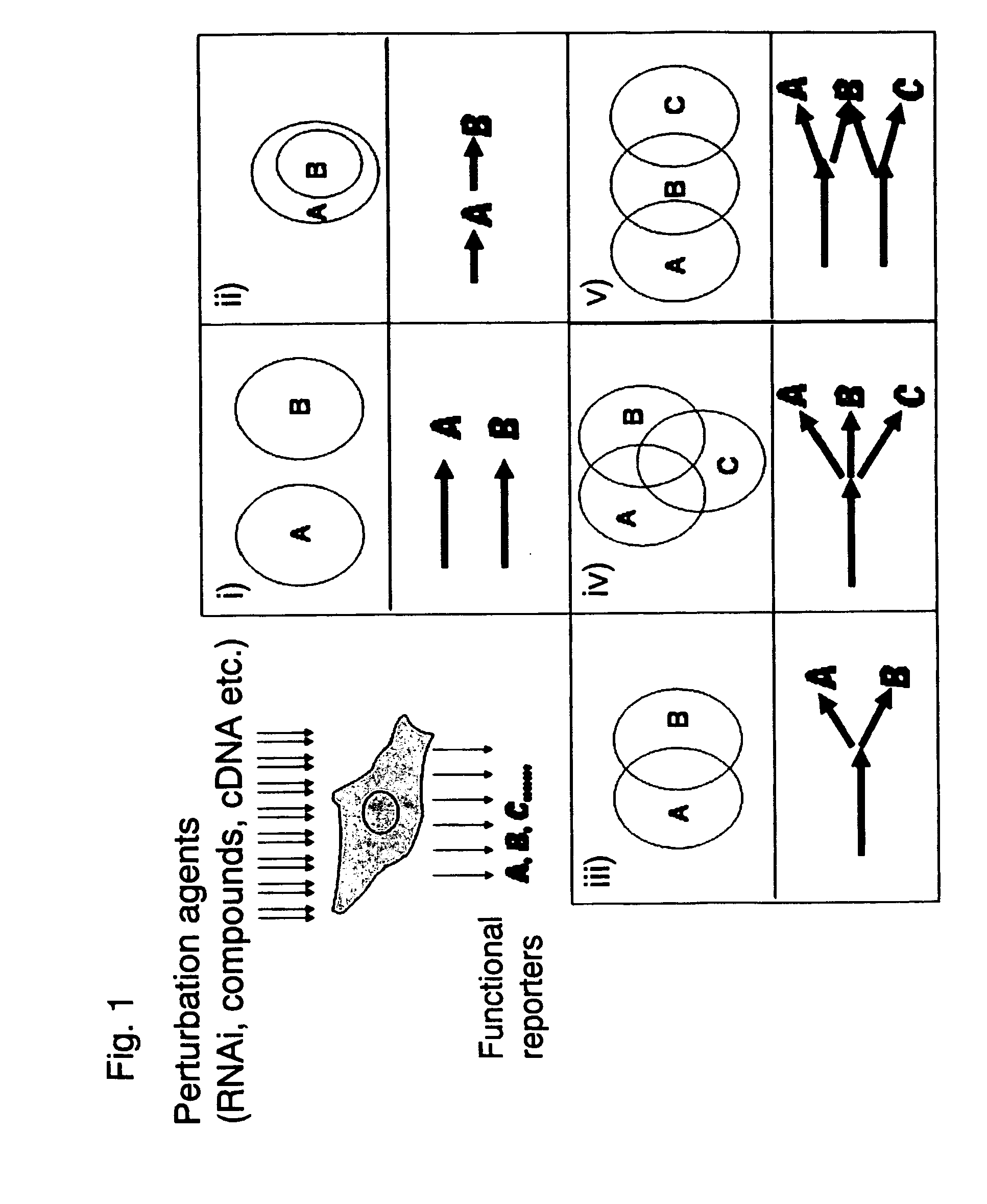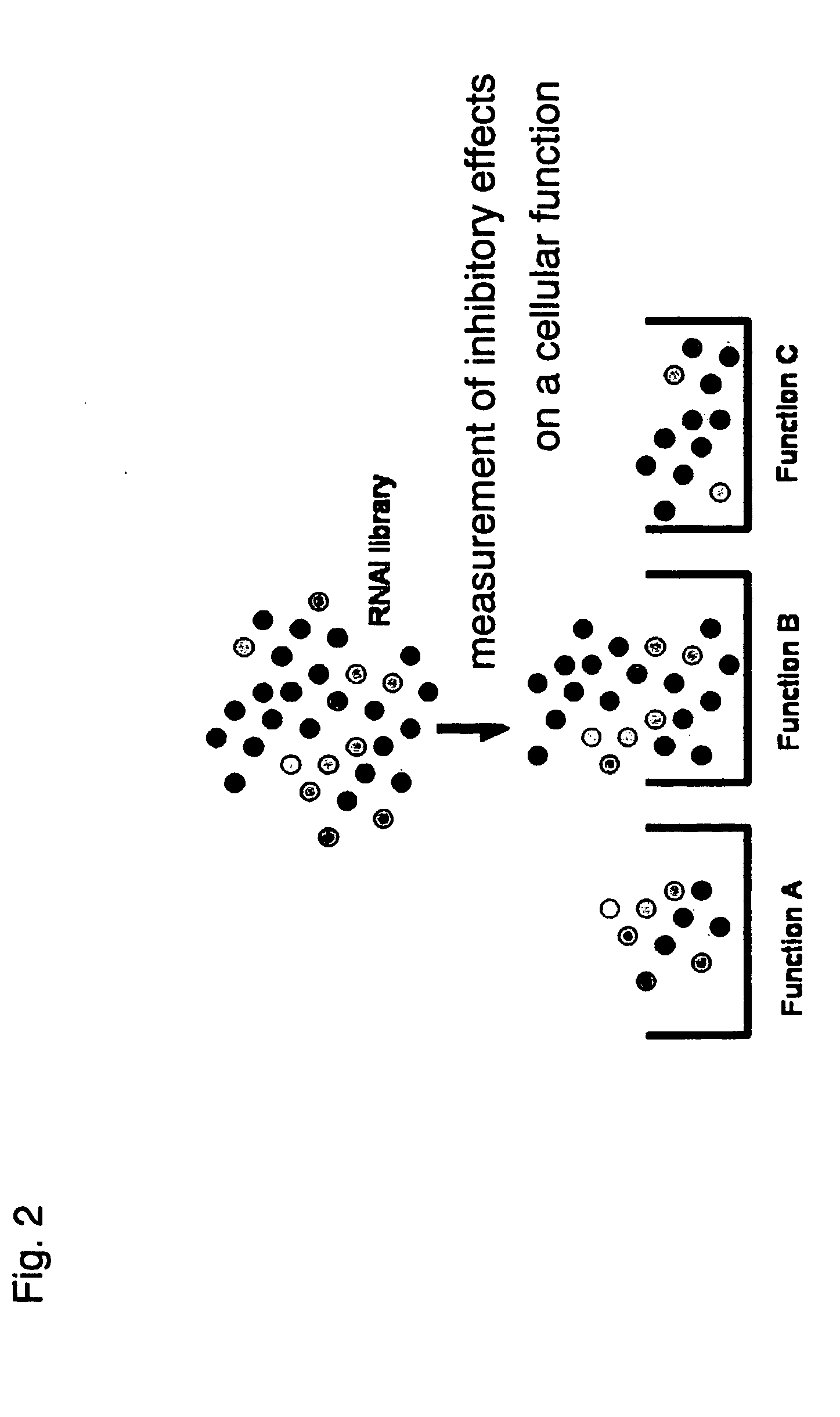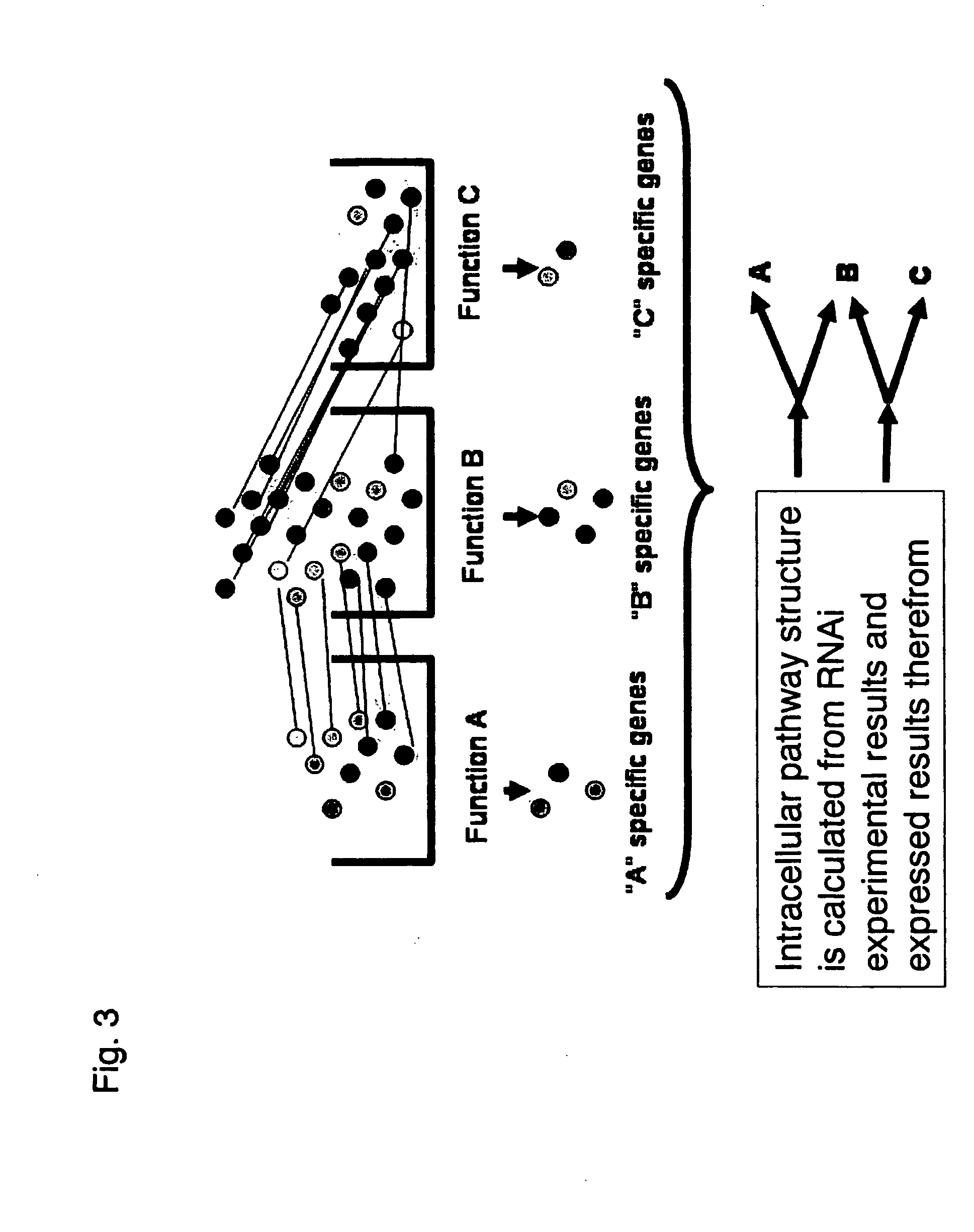Methods and systems for analyzing a network of biological functions
a biological function and network analysis technology, applied in the field of biological analysis, can solve the problems of inability to provide actual information about the network of biological functions, limited technique, and incomplete pictures, and achieve the effect of simple, efficient and correct analysis, and easy and complete analysis of global networks
- Summary
- Abstract
- Description
- Claims
- Application Information
AI Technical Summary
Benefits of technology
Problems solved by technology
Method used
Image
Examples
example 1
Reagents
[0466] Formulations below were prepared in Example 1. Fibronectin and the like were commercially available. Fragments and variants were obtained by genetic engineering is techniques: [0467] 1) fibronectin (SEQ ID NO: 52); [0468] 2) ProNectin F (Sanyo Chemical Industries, Kyoto, Japan); [0469] 3) ProNectin L (Sanyo Chemical Industries); [0470] 4) ProNectin Plus (Sanyo Chemical Industries); [0471] 5) gelatin.
[0472] Plasmids were prepared as DNA for transfection, Plasmids, pEGFP-N1, pDsRed2-N1 and other transcriptional factors and kinase encoding gene-containing plasmids (available from BD Biosciences, Clontech, CA, USA) were used. In these plasmids, gene expression was under the control of cytomegalovirus (CMV). The plasmid DNA was amplified in E. coli (XL1 blue, Stratagene, TX, USA) and the amplified plasmid DNA was used as a complex partner. The DNA was dissolved in distilled water free from DNase and RNase.
[0473] shRNA and / or siRNA were also prepared according to the kno...
example 2
Transfection Array—Demonstration Using Mesenchymal Stem Cells
[0476] In Example 2, the transfection efficiency of the solid phase was observed. The protocol used in Example 2 will be described below.
[0477] (Protocol)
[0478] The final concentration of DNA was adjusted to 1 μg / μL. An actin acting substance was preserved as a stock having a concentration of 10 μg / μL in ddH2O. All dilutions were made using PBS. ddH2O, or Dulbecco's MEM. A series of dilutions, for example, 0.2 μg / μL, 0.27 μg / μL, 0.4 μg / μL, 0.53 μg / μL, 0.6 μg / μL, 0.8 μg / μL, 1.0 μg / μL, 1.07 μg / μL , 1.33 μg / μL, and the like, were formulated.
[0479] Transfection reagents were used in accordance with instructions provided by each manufacturer.
[0480] Plasmid DNA was removed from a glycerol stock and amplified in 100 mL L-amp overnight. Qiaprep Miniprep or Qiagen Plasmid Purification Maxi was used to purify DNA in accordance with a standard protocol provided by the manufacturer.
[0481] In Example 2, the following 5 cells were...
example 3
RNAi Transfection Microarray
[0520] Arrays were produced as described in Example 2. As genetic material, mixtures of plasmid DNA (pDNA) and shRNA were used. The compositions of the mixtures are shown in Table 2.
TABLE 2pDNA vs. shRNA ratio[μL / μL]9:17:31:13:71:9plasmid DNA (1 mg / mL)1.81.41.00.60.2shRNA (1 mg / mL)0.20.61.01.41.8Lipofectamine20004.04.04.04.04.0Fibronectin (4 mg / mL)5.05.05.05.05.0
[0521] Thus, it was revealed that the method of the present invention is applicable to any cells for analysis using shRNA.
PUM
 Login to View More
Login to View More Abstract
Description
Claims
Application Information
 Login to View More
Login to View More - R&D
- Intellectual Property
- Life Sciences
- Materials
- Tech Scout
- Unparalleled Data Quality
- Higher Quality Content
- 60% Fewer Hallucinations
Browse by: Latest US Patents, China's latest patents, Technical Efficacy Thesaurus, Application Domain, Technology Topic, Popular Technical Reports.
© 2025 PatSnap. All rights reserved.Legal|Privacy policy|Modern Slavery Act Transparency Statement|Sitemap|About US| Contact US: help@patsnap.com



